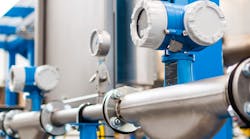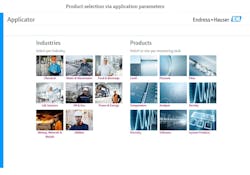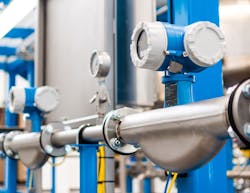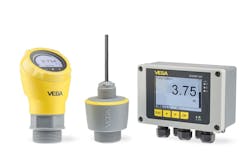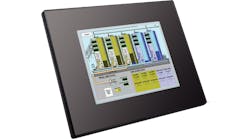A Control Design reader writes: We’re constantly dealing with multiple analog variables for measurement and control on our process skids. The variables are typically used with analog outputs for closed-loop control, but not always. We do a lot of temperature measurement on motor housings to alert operators of a high-temperature condition, for example.
For closed-loop control, there are many measurement points, and they’re used to control heating elements and cooling water valves to maintain the proper temperature of the melted material in the extruder barrel. There are plenty of flow, pressure and level measurements, as well.
Selecting the right sensor to measure temperature or other process variables can be tricky. From multivariable smart transmitters to low-cost analog sensors, there are thousands of options. Do I stay analog? Do I go multivariable? When does it make sense to choose either one? Any other things I should consider?
ANSWERS
Multivariable transmitters vs. straight analog
Multivariable smart transmitters are an innovative option to streamline the integration of process systems; however, they don’t necessarily provide the best options for machine applications. The benefits of the multivariable transmitter include easier installation and having a single connection point into a large control system. While this may sound like the best solution, it is really only helpful in some common but specific applications. Common multivariable transmitters have one flow (differential pressure), one static pressure and one temperature sensor supported by the unit. This makes them very helpful on applications like a pipeline where one would want to know all three of those values in a small section of the larger system, but for more custom systems you probably don’t have the same number of each of the process sensors. It is likely that one has four RTDs on a motor housing, an inlet and outlet pressure sensor, and a flow sensor. All things considered, a multivariable transmitter is useful for monitoring solutions, but in a skid-type application where motors or pumps are involved, a straight analog allows for better flexibility and maintenance.
MARK RUSSELL / technical sales enablement specialist / Allied Electronics & Automation
The case for smart devices
There are multiple options to consider when selecting the right device for your process application. Industry standards, sizing, approvals and the specific application all play critical roles. Fortunately, there are many applicator tools available online and subject matter experts that can help to narrow down the list of options. One of the key options in selecting the right instrument is communications and whether to use the likes of a smart device or stick to traditional 4-20 mA analog devices (Figure 1).
Figure 1: One of the key options in selecting the right instrument is communications and whether to use the likes of a smart device or stick to traditional 4-20 mA analog devices.
The simple answer here is to go with smart devices when you want to optimize your process. Smart instruments provide a great deal of information to an automation system in contrast to standard instruments, which provide only a 4-20 mA output proportional to the process variable. These insights give valuable information that could help you to improve your process and avoid unplanned shutdowns (Figure 2). Very often, these smart technologies allow users to work toward more intelligent proactive maintenance and predictive monitoring. For example, instead of waiting to get an alert that there is a high-temperature condition, process data can be used to give an alert when conditions are detected that would lead to high temperatures.
Figure 2: Insights give valuable information that could help you to improve your process and avoid unplanned shutdowns.
Various fieldbus technologies are available today that can transmit smart data such as EtherNet/IP, Foundation Fieldbus, Profibus, Profinet and Modbus. If you’ve got multiple analog loops, consider using instruments with HART digital technology. HART devices put continuous device monitoring, real-time device diagnostics and multi-variable process information on top of a 4-20 mA analog signal. Therefore, HART devices have the same level of intelligence and information as most of the previously mentioned digital fieldbus technologies. This gives you the most flexibility to continue using analog, while having the process data available via HART whenever you are ready to start using it. Then you can use the control system or an independent system to start pulling that data to make data-driven decisions within your facility.
The last thing to consider when selecting your measurement devices is to think about the future. While your company may not currently be looking to go digital or to implement IIoT solutions yet, they most likely will be in the near future. IIoT solutions can collect and analyze device data independent of the control system and provide relevant insights for your process. If you decide to go with a traditional 4-20 mA analog device, you’ve limited your options to go digital in the future.
BEN MYERS / product marketing manager for solutions and service / Endress+Hauser USA
Cost-reduction strategies
Typically, application requirements and cost will be the driving factors in which sensors you select. Analog and single variable transmitters are the go-to for small systems with point-to-point connections between sensor and controller. Looking at larger systems, there can be significant cost savings in both hardware and maintenance/installation by using multivariable devices and communication protocols. As an example, a single CANOpen master on a PLC can run around the same cost as eight additional analog inputs.
When you include the reduced cost and complexity of cabling in a bussed network versus individual wires from each sensor back to your controller, the implementation cost of a system with eight sensors will likely break even in cost where you go with CANOpen or analog feedback. As systems get larger and have more data points, the benefit of using bussed sensors become more pronounced as that one fixed CANOpen master cost is distributed over even more data points. Similarly, using multivariable sensors can further reduce cost as you will have fewer mounting ports, fewer devices to run cables to and fewer components that will need servicing.
KYLE COINER / account rep specialist / Motion Industries
High-accuracy sensors
To ensure that your closed-loop system has accurate feedback to guide it in error correction, you’ll want to use sensors specified at a high accuracy, as determined by your individual data-acquisition application. For example, if you simply want your system to maintain itself within a broad temperature window—say 40 °F to 85 °F—then you might be fine using an inexpensive thermocouple to measure temperature.
However, if your application is more complicated or demands a greater level of accuracy, you may need a more sensitive sensor such as a thermistor.
Use a pair of resistance-temperature-detector (RTD) sensors functioning as the system’s input sources, connected to a real-time controller, which relies on feedback in the form of temperature data gathered from the RTDs. This two-input system continually monitors the motor housing, with the sensors attached to its front and back, and automatically adjusts the heating element’s and cooling water valve’s temperature to regulate the output and to help prevent the tank from damage.
Here we chose RTDs for their comparatively high accuracy, as opposed to a standard thermocouple. RTDs consist of wire-wrapped cylinders that collect temperature data by sourcing a specific amount of current through their windings and sampling the resulting voltage. Using this, they calculate the resistance and then calculate the surrounding temperature.
The PLC/controller along with a data logger needs to be a real-time system connected to both sensors and continually monitors their data for set point violations. Whenever a sensor reading goes outside of the temperature limit (the input reference), the data logger output corrects the error by sending a command to the PLC to adjust. This command is immediately acted upon before the next sensor reading to correct the process. In case of an emergency, the data logger can also command the PLC to activate an audible alarm or to shut the process off.
For the duration of the process, the data logger continues to monitor the temperature sensors and to send commands at extremely high speed. In this way, accurate monitoring and real-time operation gives the benefit of responsive control in the form of sensor feedback.
DANIEL WEISS / senior product manager / Newark
Simple and reliable design
Our philosophy with level and pressure applications is to keep your design simple and reliable. We typically recommend 4-20 mA HART (analog) sensors for more than 90% of all applications. I/O Link is a newer simple wiring standard that can greatly reduce sensor cost, programming and wiring on skid packaged systems. New I/O link sensors can give you advanced level technology sensors (radar, pressure, and switches) in a compact, low-cost package.
What sensor to use? What electronics, communication protocol or wiring standard? These are the age-old questions. Multivariable controllers still have their place. Always keep it simple and reliable. The recommendation to use 4-20 mA HART or I/O link depends on the application and environmental requirements. For example, 4-20 mA can be run for hundreds of feet on indoor or outdoor applications. I/O link devices are typically used indoor on applications with limited wiring distance of less than 65 feet. Other considerations are the hardware requirements for your PLC. The sensor and electronics options you choose will affect your overall manufacturing cost (Figure 3).
Figure 3: The sensor and electronics options you choose will affect your overall manufacturing cost.
Users need to evaluate all factors of their automation project to determine what is the best solution for the customer.
PAT KOENIG / product manager / VEGA Americas
